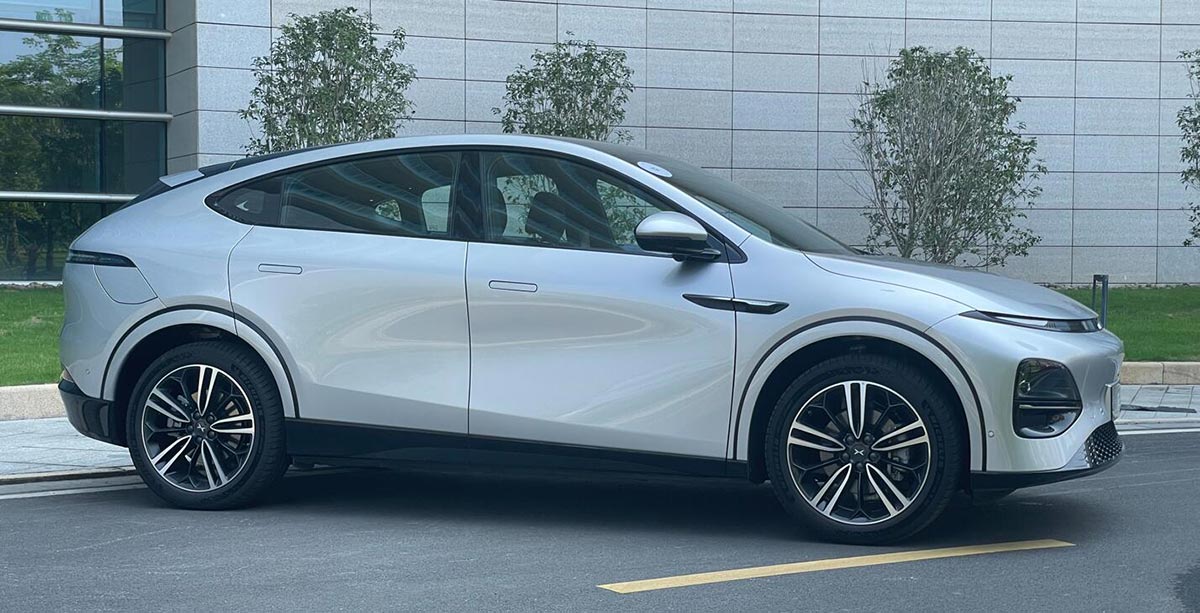Xpeng collabore avec Nvidia pour personnaliser la puce de conduite autonome afin d’améliorer les performances et la rentabilité
Véhicule électrique chinois manufacturer Xpeng (NYSE: XPEV) is engaging in discussions with leading US chipmaker Nvidia to tailor an autonomous driving chip that strikes a balance between performance and expense, as reported recently.

In a bid to optimize the functionality and affordability of its vehicles, Xpeng is seeking a customized version of Nvidia’s upcoming autonomous driving chip, Drive Thor. While Nvidia’s standard Thor chip boasts an impressive 2,000 Hauts (trillion operations per second) de puissance de calcul, Xpeng is looking to obtain a version with 750 Hauts, according to a detailed account in local media outlet Red Plan X.
The driving force behind Xpeng’s initiative is the reduction of costs associated with city Navigation on Advanced Driver Assistance Systems (NOA). This strategic move aims to make features like city NOA accessible in vehicles priced as low as RMB 150,000 ($20,590), thereby enhancing the appeal of Xpeng’s offerings to a wider consumer base.
Toutefois, the path forward poses challenges for Nvidia. If the chipmaker accommodates Xpeng’s request for a lower-powered Thor chip, it could set a precedent for other automakers to do the same, potentially rendering the development of the high-powered 2,000 Tops version less cost-effective and underutilized.
Nvidia’s Drive Thor, unveiled on September 20, 2022, as a successor to Drive Orin, delivers an exceptional 2,000 Tops of performance—a considerable eightfold increase over the Drive Orin chip currently employed in mainstream electric vehicle models.
The concept of a 750 Tops computing power aligns well with the requirements for city NOA functionality, as the existing algorithms don’t demand the full capacity of the 2,000 Tops version, according to the Red Plan X report.
The financial aspect also plays a role, as the 2,000 Tops Thor chip is costlier than the current Orin chip. Toutefois, a scaled-down version could potentially offer a more budget-friendly solution without compromising on essential capabilities.
Président et chef de la direction de Xpeng, He Xiaopeng, envisions the reduction of city NOA costs as a pivotal element in the company’s strategy. The goal is to decrease the feature’s cost to around RMB 10,000, allowing models within the RMB 150,000 range to incorporate city NOA as a standard feature.
He expressed his confidence in Xpeng’s ongoing cost-reduction endeavors, aiming to achieve an overall cost reduction of 25 percent by the end of 2024. The company’s multifaceted approach to cost reduction is expected to result in improved gross margins and enhanced product competitiveness.
Remarquablement, Xpeng has transitioned from its previous stance that autonomous driving features were infeasible within the RMB 150,000 category due to cost limitations. Maintenant, with advancements in technology and cost-efficiency measures, the company believes it can deliver fully autonomous driving capabilities in this price range.
Dans un développement significatif, Xpeng confirmed the departure of its Vice President of Autonomous Driving, Wu Xinzhou, le mois d’août 2, citing personal and family reasons. While Xpeng did not disclose Wu’s new position, reports indicate that he may join Nvidia as a global senior vice president, reporting to the CEO, Jensen Huang.
En outre, Xpeng intends to undertake chip development in-house to drive down costs even further. After temporarily scaling back its chip research and development efforts due to a sales slump last year, the success of the G6 has revitalized Xpeng’s chip R&D investments. The company is set to unveil its chip development plans at the upcoming 1024 Tech Day event.
(Note: Currency conversion rate used is $1 = RMB 7.2847)

 Auto en Chine
Auto en Chine